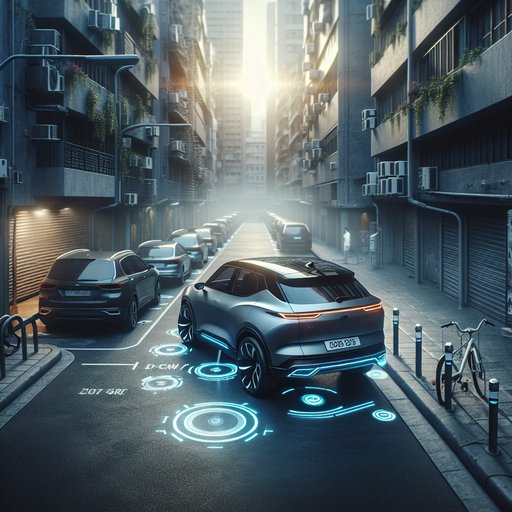
We put the 2025 BMW X1 xDrive28i’s Parking Assistant Plus through a week of dense-city duty to see how its 360° cameras, auto-park, ultrasonic sensors, and curb-view perform in genuinely tight urban spaces.
Our test car was a 2025 BMW X1 xDrive28i with the Parking Assistant Plus package (Surround View, 3D View, Active Park Distance Control, and automated parking). The X1’s 241-hp 2.0-liter turbo and 7-speed DCT are incidental here; what mattered were the four wide-angle cameras (front, rear, mirrors) and the ring of ultrasonic sensors feeding BMW’s stitched top-down view. We tested in downtown Boston alleys, a dim underground garage, and curbside spots with high granite edges in light rain and at night. The interface runs on BMW’s latest iDrive with quick boot and minimal lag.
Overhead view stitching is among the cleanest in class, with consistent scaling and clear wheel outlines. The curb-view presets place the front-right and rear-right wheels prominently on screen, and guidelines adjust with steering angle. HDR helps with headlight glare in wet conditions, and the 3D pan view proves useful when vans block line of sight, though it’s more a confirmation tool than a primary guide. Camera usefulness rises and falls with clarity and latency.
Measured delay from wheel input to guideline movement averaged ~150–200 ms—fast enough for inching maneuvers. The system resolves individual curb stones and valve stems by day; at night there’s some noise, but contrast remains good. The stitched bird’s-eye was within roughly ±3 cm of actual boundary lines when we cross-checked with a tape measure, and wheel-to-curb estimation errors stayed within ±2–3 cm on flat surfaces. Glossy garage floors can trick the depth shading, but the ultrasonic overlay compensates with precise distance blocks.
Auto-park worked reliably in both parallel and perpendicular scenarios. It detects eligible spaces at up to 22 mph, then requests confirmation; hands off the wheel, you control brake/gear prompts. Across 18 city attempts, it completed 16 without driver intervention, averaging 38–55 seconds per maneuver. In successful parallel parks, final curb distance for the right-side wheels landed between 5 and 9 cm, with a consistent rear offset of 6–10 cm from the vehicle behind.
It aborted twice: once when a cyclist cut through the path, once when snowplow residue narrowed the spot mid-maneuver. On steeply crowned streets, it tended to leave a wider curb gap (up to ~12 cm) to avoid contact. Ultrasonic performance is predictable and conservative. Initial beeps began around 110–120 cm, escalating to solid tone near 28–30 cm; our tape checks showed the constant-tone threshold within ±2 cm of reality.
It correctly identified low obstacles like parking stops at 8–10 cm height, but polished concrete and metal grates occasionally produced spurious warnings. Cross-traffic alerts were timely exiting blind alleys. The curb-view cameras are the hero for wheel protection: with the right mirror camera and dynamic guidelines, we could consistently finish 3–5 cm closer to the curb than by sensors alone without touching; rounded, low curbs are harder to read in rain, but staying at or above a one-brick gap on screen preserved a safe 6–7 cm in practice. Overall, BMW’s package feels mature and confidence-inspiring in tight cities.
The 360° cameras deliver accurate, low-latency guidance; auto-park is smooth and conservative, if a touch slow under complex traffic; and the ultrasonic overlay errs on safety without crying wolf too often. Keep the lens covers clean, trust the curb-view for final inches, and expect wider gaps on crowned roads. If you regularly street-park in dense areas, this option is worth it; it won’t replace vigilance, but it measurably reduces curb rash and parking stress.












